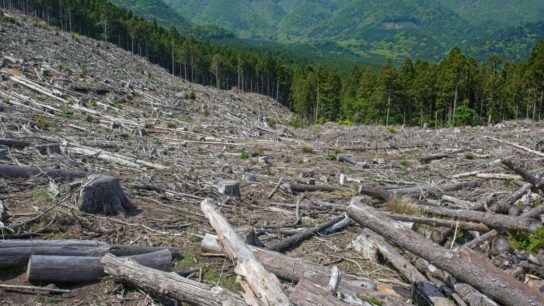Part of the European Union’s Biodiversity Strategy for 2030, the Nature Restoration Law is the latest bold and ambitious piece of environmental legislation passed by the bloc. Its aim is to reverse the loss of natural ecosystems. The law is the first of its kind, setting bloc-wide legally binding restoration targets that all member states must aim to meet.
—
The ongoing biodiversity crisis was again confirmed by the 2024 Living Planet Report. Global average population sizes of monitored vertebrate species have declined by 73% since 1970 (freshwater: -85%, terrestrial: -69%, marine: -56%). Habitat loss was found to be the number one driver of population declines. In the European Union (EU), 81% of habitats and 63% of protected species are considered to have a “poor” conservation status.
The loss of species and habitats is devastating and critical actions are needed to reverse the loss of biodiversity on Earth. Through their Biodiversity Strategy for 2030, the EU aims to do just that.
EU Regulation 2024/1991, better known as the Nature Restoration Law, was passed by the European Council in June 2024 and came into force two months later. This regulation will require all EU member states to draft and begin implementing national restoration plans by July 2026. This gives member states two years to plan, coordinate, and begin restoration efforts.

Goals and Targets
The EU aims to restore 30% of degraded freshwater, terrestrial, and coastal habitats by 2030. This goal is increased to restoring 60% by 2040 and 90% by 2050. The law focuses specifically on habitats listed for protection under Annex I of the Habitats Directive. In their national restoration plans, each member state must also aim to meet these percentage targets within their country’s borders. Some habitat types, namely peatlands, have separate targets from the overall goal and are considered high-priority.
Additional restoration targets include:
- Rewetting 25% of degraded peatlands by 2030;
- Restoring 25,000 kilometers (15,534 miles) of “free-flowing” rivers and floodplains through the removal of obsolete artificial barriers (dams, weirs, etc.);
- Ensuring no net loss of urban green spaces or tree coverage, and aim to increase these areas within cities after 2030;
- As a Union, plant at least 3 billion additional trees by 2030;
- Reverse the decline of pollinator populations.
Concerns From Agriculture, Forestry, and Fisheries Sectors
Opposition was presented to the law when first proposed in 2022 and throughout the negotiation process in 2023 and 2024. The opposition was primarily from European farmers with members of the forestry and fisheries sectors also voicing their concerns. The farmer strikes that occurred across Europe in 2023 and early 2024 were partially in opposition to the strict environmental regulations being placed on the agricultural sector, including in the Nature Restoration Law. Protests led by member states in the Eastern bloc were strongly against the objective of peatland rewetting as they voiced that it would take away crop land.

The forestry and fisheries sectors shared similar concerns that increased protections on land and new restoration efforts would limit economic output possible from these activities.
You might also like: Europe’s Agricultural Future May Lie in Both Innovative and Ancient Farming Practices
Benefits For Biodiversity and the Climate
Restoring natural ecosystems was identified as a key priority in the Kunming-Montreal Global Biodiversity Framework. Restoring degraded habitats, like peatlands and forests, contributes greatly to natural carbon sequestration.
As the number one driver of biodiversity loss, reversing the loss of habitats will also allow for populations of wildlife and marine life to survive and likely recover. Human society as well will benefit from the restoration of natural areas. Habitats like mangroves and floodplains are incredibly effective at reducing damage from natural hazards like storms and flooding. The tandem of suitable habitat and soil biodiversity also provides services like nutrient cycling to agricultural lands that could actually benefit agriculture, rather than harm it.
Outlook
The EU’s Nature Restoration Law is hailed by many as one of the most significant pieces of environmental legislation to date. It was designed to work in tandem with other EU legislation like the Habitats Directive, Birds Directive, Climate Law, Water Framework Directive, and others. It will play a role in helping the EU meet its commitments to the Global Biodiversity Framework (specifically Target 2) as a signee of the Convention on Biological Diversity.
The detailed requirements for national restoration plans will hopefully promote effective planning and implementation of the law. Member states must include implementation timelines, funding sources and needs, as well as the anticipated benefits of all planned projects completed under the law. Progress reports are also required every six years after implementation of plans begins in 2026.
At least “on paper,” the EU has set an example of powerful environmental action for the rest of the world to follow and continues to add on to its ambitious legislative array under the European Green Deal. Only time will tell if the bloc will be able to deliver on its commitments.
This story is funded by readers like you
Our non-profit newsroom provides climate coverage free of charge and advertising. Your one-off or monthly donations play a crucial role in supporting our operations, expanding our reach, and maintaining our editorial independence.
About EO | Mission Statement | Impact & Reach | Write for us














